Syn.: Abies excelsa Link., Abies pectinata (Lam.) DC. in Lam. et DC, Abies picea (L.) Pers., Abies vulgaris Poiret, Pinus abies Du Roi, Pinus pectinata Lam., Pinus picea L.
Family: Pinaceae Lindl.
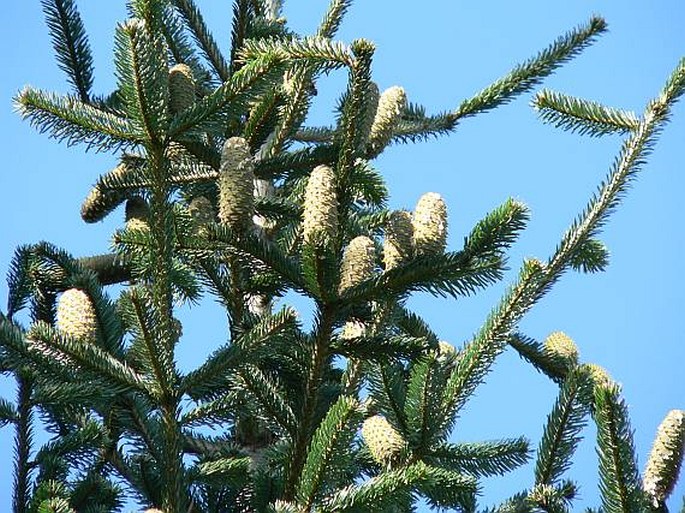
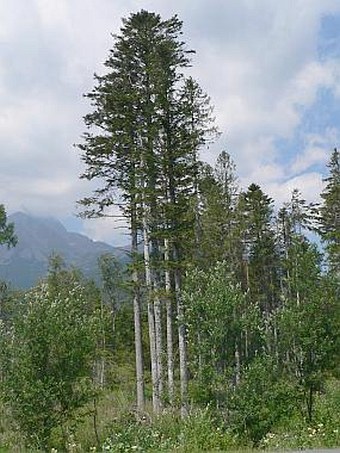
Distribution: Central and southern Europe, in the south it grows from the Pyrenees through Corsica, southern Italy and Macedonia to Bulgaria and Greece. Southernmost habitat is in the south of the Apennine Peninsula in Calabria, westernmost in the east of Pyrenees – where forms forest boundary. Slightly less in the west – in the northwest France is a small isolated area with Silver Fir in Normandy, another one is in the middle of France. More continuous distribution begins in western foothills of Alps in the eastern France and in the Jura Mountains, Vosges Mountains and Black Forest. Northern boundary of the Silver Fir goes from northwestern Germany and Thuringian Forest through the foothill of the Ore Mountains and the Giant Mountains, further over the Malopolska and Lublin Upland in Poland. Northern limit is near Warsaw and in Białowieża Forest. Eastern border connects and continues into the East and South Carpathians. The Silver Fir is rarely substituted in Alps system and in the Tatra Mountains.

Ecology: The Silver Fir is a woody species mainly from oceanic middle cold and wet climate with mild winters. It grows in vertical interval between 140–2100 m asl. Lowest point is in the gulch of the Elbe Sandstone Mountains, highest point is in the Pyrenees. Severe winters and dry hot summers are not acceptable for this tree. It is also late frost sensitive. It is shady woody species. Silver Fir is mostly tolerance tree to the shading after a yew-tree. Underwood can vegetates in strong shadow even 120 year, sometimes is 1–2 m tall. It has high requirements for air moisture. Minimal precipitation vary between 500–1000 mm, optimal precipitation are between 1000–2500 mm. Precipitation need increases from north to the south. Exception to this is relatively xerophilic relict inalpine ecotype from Wallis canton (southwest Switzerland). This area has very low precipitation between 400–550 mm per year – from that is during summer only about 270 mm.
It grows mainly from the deeper middle nutritive over richer freshly wet to underflooded soils, rarely also on peaty to stony soils. In some areas is its optimal location also limestone rocks (Western Alps, Jura). In lower locations grows rather in colder and wetter basins and folds, in the north border of this area also on alluvial plain. It keeps a good quality of soil with its needle defoliation that is quickly decomposed to the slightly acid humus.
Together with the European Beech and Norway Spruce forms so-called Hercynian mixture. Mixture of beech and fir was most usual structure of nature vegetation in middle and mountain locations in the Czech Republic, higher it was then the mixture of spruce and fir. In canyons and on debris was developing mixtures of firs for example with maples, in warmer locations also with hornbeam, in the poorer locations with scotch pine. As the secondary woody species are here also limes, sessile oaks, rowans or hazel. It belongs between the most productive European woody species.
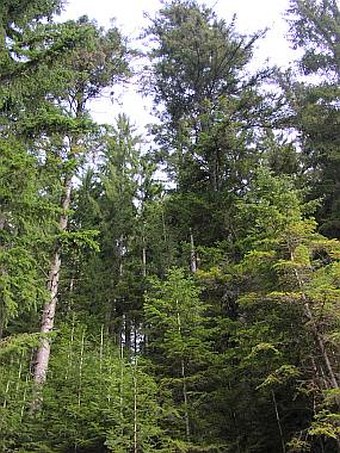
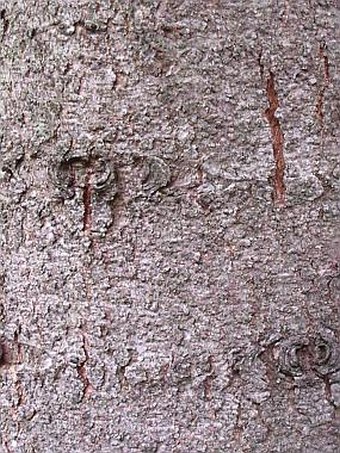
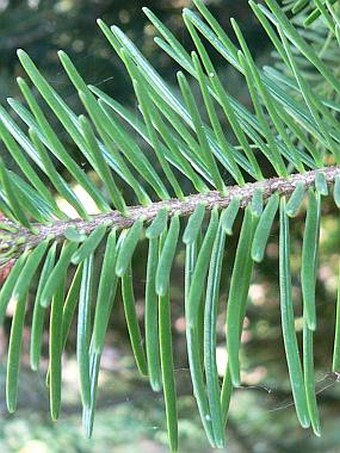
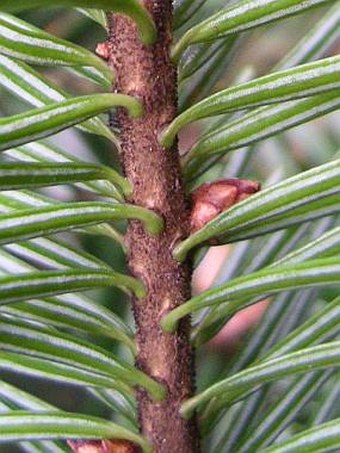
Description: Evergreen coniferous tree with conical to cylindrical and very shapely treetop, 30–60 m tall and with a trunk diameter of up to 1–2 m. Root is ball-shaped to heart-shaped with deep going pseudopodical fixative roots. Bark with resin canals is smooth, white-grey, later lengthwise fissured and grey. Wood is yellowish white with sharply limited annual rings without resin canals. Current year shoot are smooth, brown with remarkable dark hairs. Buds are egg-shaped, brown without resin. Needles are double-rowed aligned and covers shoot on generative branches. Needles are 18–30 mm long and 2 mm wide, flat, glossy dark green and slightly notched above, and with two greenish-white bands below, on the tip are usually slightly cutted out, on the generative branches are needles rounded to pointed.

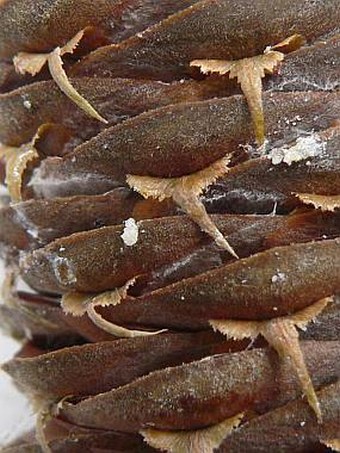
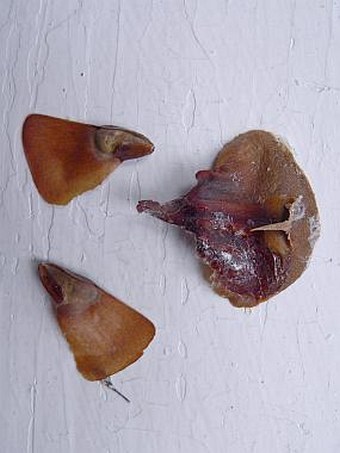
Male strobiles are 2 cm long and 0.6 cm wide, green-yellow, mostly placed from middle part to bottom at the edge of the treetop, underneath last year’s shoot. Female strobiles 2.5–4.5 cm long and 1–1.5 cm wide, green-yellow to red, at the top of the last year´s shoot at the treetop. Cones are erect, disintegrated, 10–18 cm long and 3–5 cm wide, during maturing are greenish to bluish , after maturing are brown. Supporting scales extrudes from the cone, mostly are rolled up and pressed. Seed is 7–10 mm long, three-squared, glossy brown, wing is wide, asymmetric. Cones matured in the first year during the September. It is a long-lived tree, with ages of 300–600 years.
Threat and protection: In last 200 years was fading away and receded. Along the reconstruction could have been the nature distribution about 18 %, presently is it unfortunately only 0, 9 % in the forest. Dying back is connected especially with human activity – with the coming of clear felling, short time of regeneration. Among other causes belongs also its delicacy against sudden changing of location, air pollution, global warming, climatic extremes, dewatering of landscape, dewatering of vegetation, insectual calamity, fungal diseases, overpreservation of animals, but also phylogenetic and genetic causes.
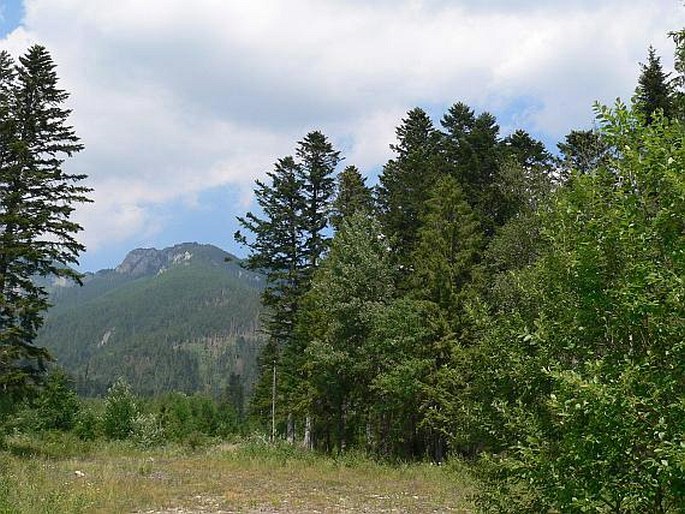
Records of this species: Probably the tallest living European tree is 65 m tall (in the primaeval forest Peručica in the National Park Sutjeska in Bosnia near the border with Montenegro). Legendary Silver Fir 68 m tall and with a trunk diameter of up to 3.8 m grew in German Black Forest. Reputedly had cubage 140 m³ In the Bohemian Forest was famous Prince Josephs Silver Fir located near the city Vyšší Brod that was 50 m tall with a trunk diameter of up to 2.07 m and estimated cubage 65,3 m³. This one died after the year 1839. Rough Fir (Hrubá jedľa) from Dobročsky primaeval forest in Slovak Ore Mountains had cubage 47.3 m³.
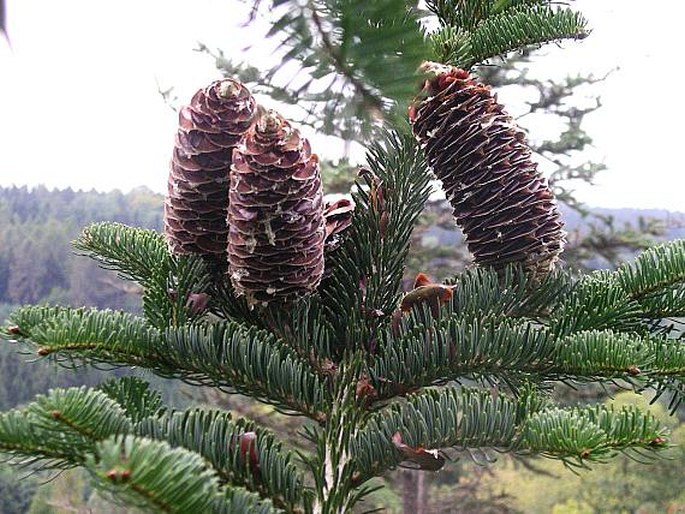
Using: The wood has similar technical characteristics as the pine-wood, is less glossy and worse for planning, easy grayish. More often than for wood-production was used as the building wood, especially as mining timber. The reason was following – before the breaking of firry pit prop under the pressure makes this material loud noise and through this warns of break down. Further was the wood used for water construction (under the water is more durable), production of musical instruments and shingles. From bark was extract terebinth. The Silver Fir is not very useful for plantation. It is used as Christmas tree and decorative foliage.

Photos: 16. 9. 2006 (Czechia, Arboretum Kostelec nad Černými Lesy), 24. 9. 2006 (Czechia, Arboretum Sněžná), 20. 7. 2006 (Slovakia, Tatranská Kotlina) and 16. 8. 2005 (Bosnia, foothills of Dinaric Alps).
Translation: Lucie Hodačová


